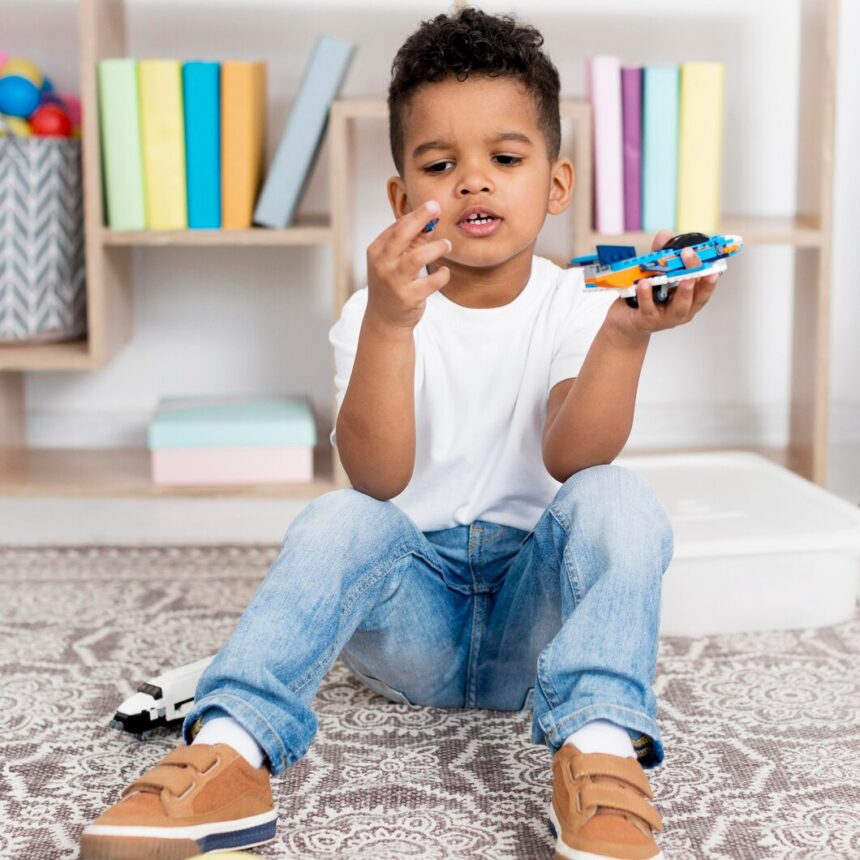As children grow, they reach various developmental milestones that signify their physical, cognitive, social, and emotional growth. By the age of 4, children have made significant strides in these areas. Understanding these milestones can help parents and caregivers support their child’s development effectively.
Physical Development
- Gross Motor Skills: At 4 years old, children typically demonstrate improved coordination and balance. They can run, jump, and climb with more agility. Most children can also kick a ball, throw a ball overhand, and catch a ball thrown to them. They may enjoy activities like riding a tricycle or hopping on one foot.
- Fine Motor Skills: Fine motor skills continue to develop, enabling children to perform tasks that require more dexterity. By this age, children can typically draw simple shapes, use scissors to cut paper, and build towers with blocks. They may also be able to copy letters and write their names with some assistance.
Cognitive Development
- Language Skills: Four-year-olds often have a vocabulary of around 1,000 words and can form complex sentences. They enjoy storytelling and may start to ask “why” and “how” questions as they seek to understand the world around them. Engaging in conversations and asking open-ended questions can further enhance their language skills.
- Problem-Solving and Thinking Skills: Children begin to exhibit more advanced thinking skills, such as sorting objects by shape or color, recognizing patterns, and understanding the concept of time (yesterday, today, tomorrow). They can follow simple instructions and may enjoy puzzles and games that challenge their thinking.
Social and Emotional Development
- Social Skills: Four-year-olds typically enjoy playing with other children and can engage in cooperative play. They begin to develop friendships and may show empathy toward others. They can take turns and share toys, although sharing may still be challenging at times.
- Emotional Regulation: Children at this age are learning to express their emotions more effectively. They may experience a range of emotions and may have occasional temper tantrums. However, they are also beginning to understand feelings and may be able to articulate their emotions, saying things like “I’m sad” or “I’m happy.”
Independence and Self-Care
- Self-Care Skills: Four-year-olds are typically more independent and can perform basic self-care tasks. They may be able to dress themselves with minimal assistance, brush their teeth, and wash their hands. Encouraging independence in these activities can boost their confidence and self-esteem.
- Understanding Rules and Boundaries: At this age, children start to understand rules and boundaries. They may ask about the consequences of their actions and are more likely to follow simple rules set by caregivers or teachers. Consistent reinforcement of rules can help them learn responsibility.
Play and Learning
- Imaginative Play: Imaginative play is a hallmark of this age. Four-year-olds enjoy pretending, whether it’s playing house, dressing up, or creating scenarios with toys. This type of play fosters creativity and cognitive development, allowing children to explore different roles and situations.
- Learning Through Play: Play is a vital component of learning for 4-year-olds. Engaging in games that involve counting, sorting, and categorizing can help strengthen their cognitive skills. Activities such as reading stories, singing songs, and participating in arts and crafts encourage language development and creativity.
Milestones for a 4-year-old child encompass various aspects of development, including physical, cognitive, social, emotional, and self-care skills. While every child develops at their own pace, understanding these milestones can help parents and caregivers provide appropriate support and encouragement. Celebrating achievements and nurturing a child’s interests can foster a lifelong love of learning and exploration.










